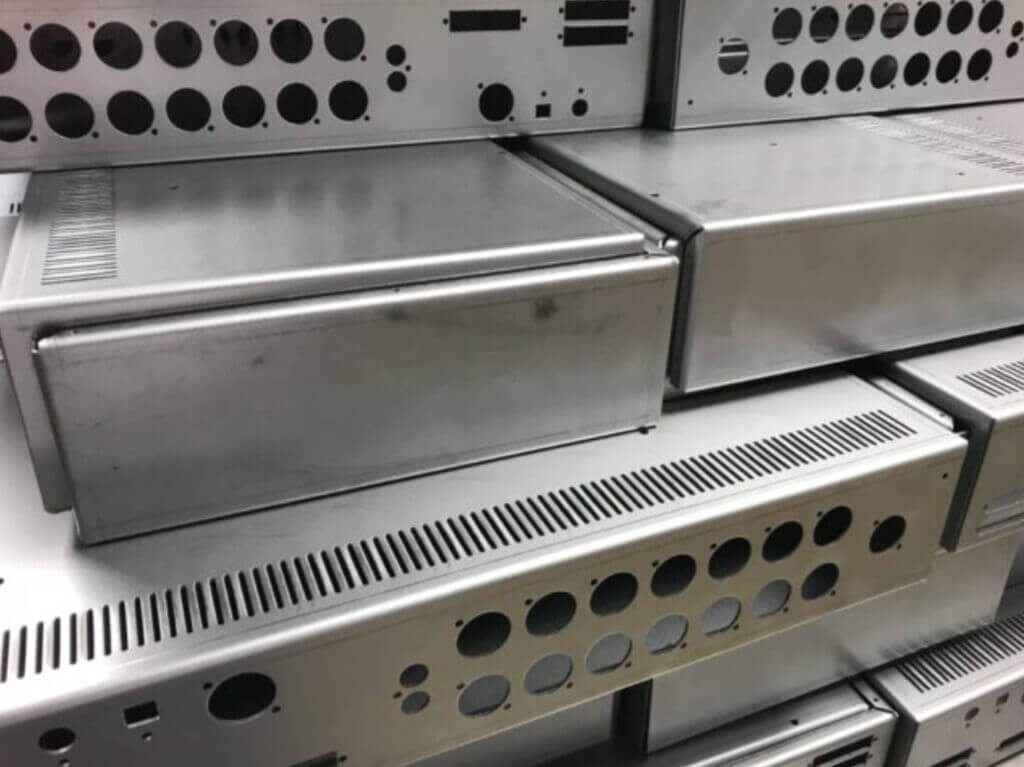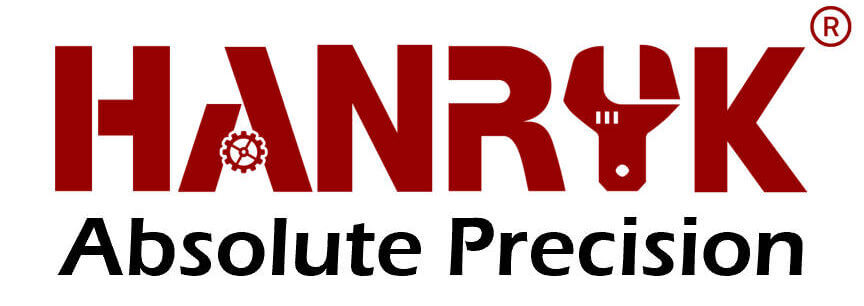钣金制造公差和质量控制
- by Hanryk® Team
- January 12, 2022
Sheet metal fabrication is an important part of the manufacturing process for a wide range of products, from automotive components to consumer electronics. To achieve high-quality finished products, it’s essential to understand the role that tolerances and quality control play in sheet metal fabrication.

Tolerances in Sheet Metal Fabrication
Tolerances are the allowable deviation from the intended dimensions of a part or product. In sheet metal fabrication, tolerances are especially important because the sheet metal is often used to create components with intricate shapes and small details.
For example, the thickness of the sheet metal may vary by a few thousandths of an inch, which can have a significant impact on the finished product. If the tolerances are too loose, the part may not fit together properly or function as intended. On the other hand, if the tolerances are too tight, it may be difficult or even impossible to manufacture the part.
To ensure that tolerances are within the acceptable range, sheet metal fabricators use a variety of tools and techniques, including computer-aided design (CAD) software, precision cutting tools, and measuring equipment such as calipers and micrometers. By carefully controlling the tolerances, sheet metal fabricators can ensure that the finished product meets the customer’s requirements and specifications.
Quality Control in Sheet Metal Fabrication
Quality control is another important aspect of sheet metal fabrication. It involves the systematic inspection and testing of the sheet metal components at various stages of the manufacturing process to ensure that they meet the required specifications and quality standards.
To implement effective quality control in sheet metal fabrication, fabricators often use a range of techniques and tools, including statistical process control (SPC), non-destructive testing (NDT), and visual inspection. These techniques help to identify and correct any defects or issues in the sheet metal components before they are shipped to the customer.
Data and Charts on Sheet Metal Fabrication Tolerances and Quality Control
To better understand the importance of tolerances and quality control in sheet metal fabrication, let’s take a look at some data and charts that illustrate their impact on the finished product.
Chart 1: Tolerances in Sheet Metal Fabrication
The chart below shows the typical tolerances for various types of sheet metal fabrication processes. These tolerances are based on industry standards and can vary depending on the specific requirements of the customer.
|
Process |
公差范围 |
|
Laser cutting |
±0.005″ to ±0.010″ |
|
Punching |
±0.005″ to ±0.020″ |
|
Bending |
±1 degree to ±2 degrees |
|
Welding |
±0.030″ to ±0.050″ |
|
Finishing |
±0.005″ to ±0.010″ |
As you can see, the tolerances for sheet metal fabrication can vary significantly depending on the process being used. It’s important to work with a sheet metal fabricator who has the expertise and equipment to meet the required tolerances for your project.
Chart 2: Quality Control Metrics for Sheet Metal Fabrication
The chart below shows some of the key quality control metrics used in sheet metal fabrication, along with their typical acceptable ranges.
|
Metric |
Acceptable Range |
|
Thickness |
±0.003″ to ±0.010″ |
|
Flatness |
±0.005″ to ±0.010″ |
|
Burr |
<0.005″ |
|
Surface finish |
63 to 125 microinches |
|
Weld penetration |
>50% of thickness |
These metrics are used to evaluate the quality of the sheet metal components at various stages of the manufacturing process, from raw material inspection to final finishing. By ensuring that these
metrics are within the acceptable range, sheet metal fabricators can ensure that the finished product meets the required specifications and quality standards.
Data on the Benefits of Tolerances and Quality Control in Sheet Metal Fabrication
To better understand the benefits of tolerances and quality control in sheet metal fabrication, let’s take a look at some data and examples.
Example 1: Automotive Industry
In the automotive industry, sheet metal fabrication is used to create a wide range of components, from body panels to engine parts. One of the key benefits of sheet metal fabrication is the ability to create complex shapes and designs with high precision.
However, achieving this level of precision requires careful control of tolerances and quality. According to a study by the Center for Automotive Research, defects in sheet metal components can increase manufacturing costs by up to 25%. By implementing effective quality control measures, sheet metal fabricators can reduce the risk of defects and improve the overall efficiency and profitability of the manufacturing process.
Example 2: Consumer Electronics
Sheet metal fabrication is also commonly used in the manufacturing of consumer electronics, such as smartphones and laptops. In this industry, tolerances are especially important because the components are often very small and intricate.
According to a study by the Institute of Electrical and Electronics Engineers (IEEE), the use of high-precision sheet metal fabrication techniques has enabled the creation of thinner, lighter, and more durable consumer electronics products. This has had a significant impact on the industry, driving innovation and improving the customer experience.
Conclusion
Tolerances and quality control are essential aspects of sheet metal fabrication, enabling the creation of high-quality components and products for a wide range of industries. By carefully controlling the tolerances and implementing effective quality control measures, sheet metal fabricators can ensure that the finished product meets the required specifications and quality standards.
Data and charts can be used to illustrate the impact of tolerances and quality control on the finished product, and to demonstrate the benefits of sheet metal fabrication for different industries. If you’re interested in using sheet metal fabrication for your manufacturing needs, it’s important to work with an experienced and reliable fabricator who can help you achieve the desired results.

